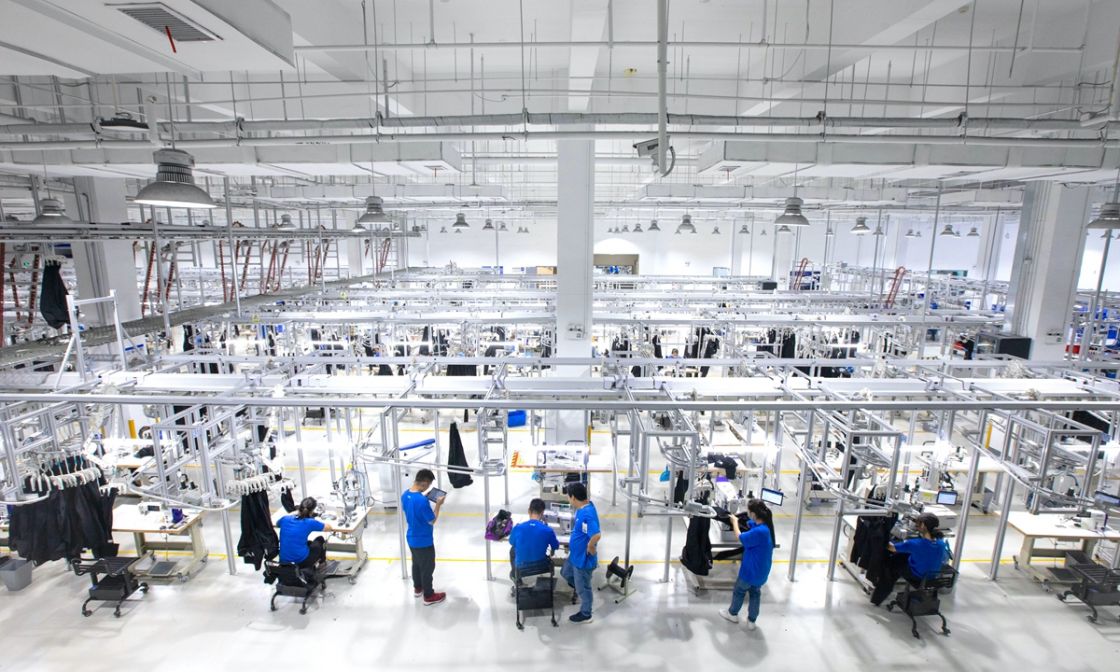- Articles
- Posted
Who are pioneers of Chinese modernization?
China has a long history that stretches for thousands of years. At the beginning of the 19th century, China's GDP ranked first in the world. However, by the end of the Qing Dynasty, the country was closed to the world and foreign powers invaded, resulting in a sluggish Chinese economy. Before the reform and opening-up in the 1970s, China was still a poor country with a GDP that only accounted for 1.5 percent of the world.
Ever since the reform, China has re-entered a period of vibrant growth with its GDP accounting for 18 percent of the world's total in 2022, and expected to reach 20 percent in the next few years. This is a remarkable change.
What happened, and the reasons behind it, are extremely deep and complex. The most important contributors are the Chinese people themselves, who have made most of the innovations in the past few decades.
For instance, the new system of farming instituted in late 1970s, named the Household Responsibility System, was born out of a commune founded by 18 households in east China's Anhui Province, and has since been approved by the leadership and adopted nationwide.
Migrant workers have also contributed to Chinese modernization. About 250 million people worked hard in harsh factory conditions in their early years but their salary was much higher than in the rural areas so they were happy to do such jobs. With the development of Chinese society, their wages are now gradually increasing.
Even in today's world, the technological innovations we see come primarily from private companies founded by visionary individuals, some of them very successful. So, the Chinese people have made contributions to China's modernization at different levels, and this is not a random event.
The second factor is the capacity of the government's leadership team. I have met hundreds of Chinese political leaders, including national, provincial, municipal, all the way down to township and village level. I see a dedication and a high level of leadership in them. Although the Chinese government inevitably has problems that other governments have to a certain extent, the overall capability of the government is obvious. When I meet with the deputy governor or the deputy mayor, I ask them some questions, and I tend to get detailed and professional data and analysis.
China's poverty alleviation work has detailed numerical targets that government officials must achieve. If they fail to meet this goal, they cannot be promoted. If they really fell far short of their goals, they could be demoted. The government takes independent assessment tests to prevent cheating, or at least limit it.
China's political system attaches importance to the performance management of government officials. Although official collusion and financial corruption may occur from time to time, it is undeniable that a high level of government leadership has been the main driving force for Chinese modernization.
The third factor can be summed up in one phrase: Seek truth from facts. "Crossing the river by touching the stones" is an image metaphor for former Chinese leader Deng Xiaoping's strategy of reform and opening-up. This sentence sounds simple, but it requires the government to conduct experiments and adjust the theory based on practical results before carrying out policies on a large scale.
For example, special economic zones (SEZs) are used for testing purposes. Initially, there were only four SEZs in China, separated from other regions so that it would not affect the entire country if it did not work. After years of experiments, the SEZ policy was extended to more regions and finally to the whole country.
The same is true for free trade zones (FTZs). As a brand-new way for Chinese society to open up and communicate with the world, the first FTZ, officially known as China (Shanghai) Pilot Free Trade Zone, was established in 2013. Only after it was proved successful and adapted was the policy rolled out in the other cities. Although I don't know exactly how many FTZs there are now in China, there is no doubt that the number is constantly growing, and the entire Hainan Island, the southmost province, is also included.
As a big country, if China takes the wrong policies, it could cause big problems. So, they need to conduct trials in a specific location and gather feedback from them to improve policies before large-scale deployment. This approach also demonstrates the ability of the Chinese government to govern.



 Robert Lawrence Kuhn
Robert Lawrence Kuhn